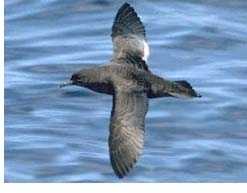Nicole Schumann (School of Life and Environmental Sciences, Deakin University, Burwood, Australia) and colleagues, writing in the Journal of Field Ornithology have looked at how far sampling regimes of burrow-nesting seabirds may be safely reduced in effort.
The paper’s abstract follows:
“Regular monitoring of seabird populations is necessary to improve our understanding of their responses to environmental change and inform conservation management. However, given the difficulty in accessing remote breeding sites and the limited resources typically available to land managers, conducting regular, extensive surveys of seabird populations is often not feasible. Our objective was to determine the minimum survey effort required to obtain accurate and precise population estimates of Short-tailed Shearwaters (Ardenna tenuirostris) and Little Penguins (Eudyptula minor), two abundant burrowing seabird species in southeastern Australia, by comparing bootstrapped means and confidence intervals under different sampling regimes on four islands. We found that, in many cases, survey effort (the proportion of transects and quadrats along transects surveyed) could be reduced. For Short-tailed Shearwaters, reducing the number of transects resulted in a maximum difference of 15% between the means at full survey effort and two levels of reduced survey effort. Means differed by <3% when we halved the number of quadrats. For Little Penguins, reducing the number of transects and quadrats by 50% resulted in differences of 7–40% and 4–34%, respectively, between the full and reduced survey effort means. Confidence intervals generally increased with decreasing survey effort for both species. Differences in required survey effort between the two species in our study may have been due to differences in burrow distribution on islands, with Short-tailed Shearwater burrows generally uniformly distributed on each island and Little Penguin burrows typically occurring in patches. These would be influenced by island-specific characteristics in concert with habitat preferences, population size, and seasonal variation in seabird abundance. Stratified sampling did not increase survey accuracy and simulations showed that large reductions in survey effort could be made under a pseudo-random sampling regime, with mean abundance estimates similar at most levels of survey effort. For both species, reducing the proportion of pseudo-random quadrats to 50% and 25% of the full survey effort produced confidence intervals of 12% and 21%, respectively, of the maximum, whereas a survey effort of 10% produced confidence intervals of up to 36% of the maximum for both species. A pseudo-random sampling regime would maximize survey efficiency because considerably fewer quadrats would be required and allow development of more efficient sampling protocols and regimes.”

Short-tailed Shearwater. Photograph by Mark Carey
Reference:
Schumann, N., Dann, P., Hoskins, A.J. & Arnould, J.P.Y. 2013. Optimizing survey effort for burrow-nesting seabirds. Journal of Field Ornithology 84: 69-85.
John Cooper, ACAP Information Officer 3 March 2013

 English
English  Français
Français  Español
Español